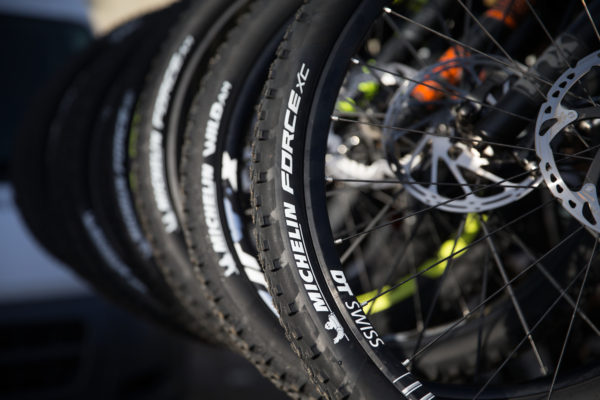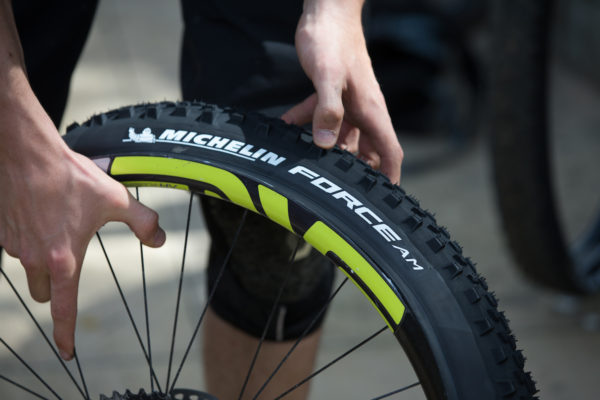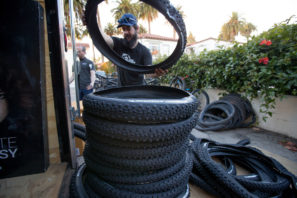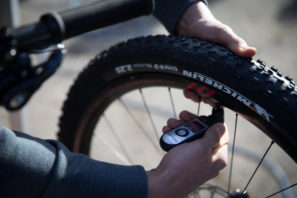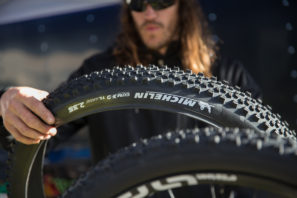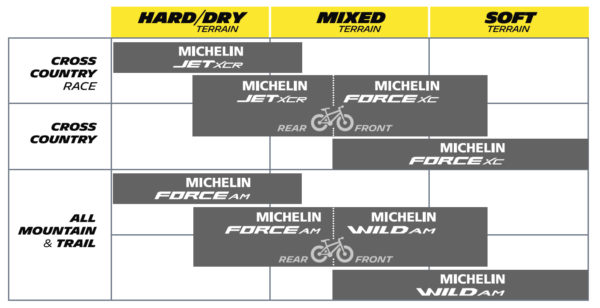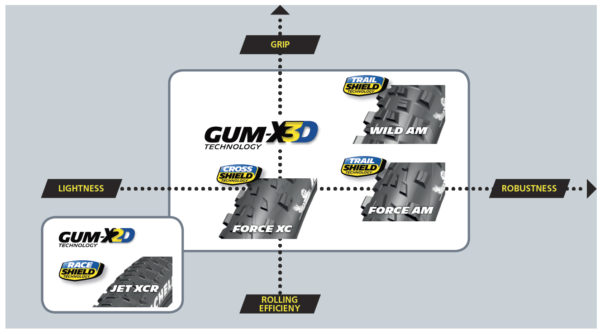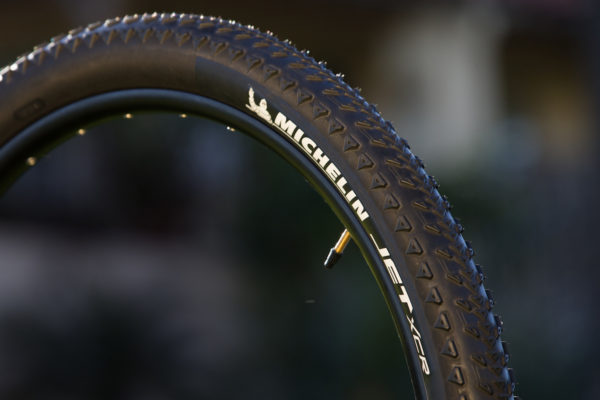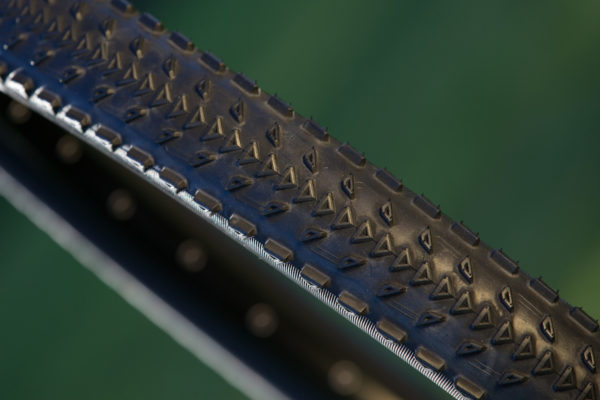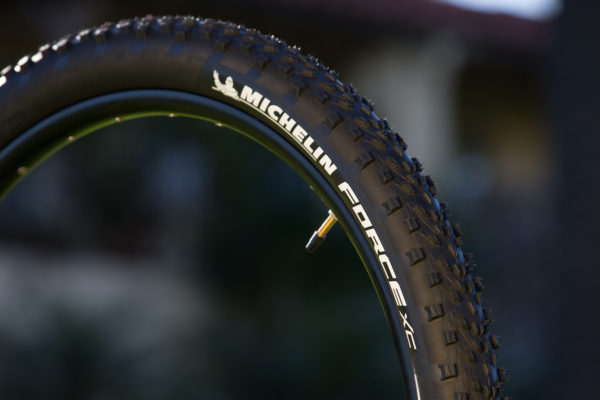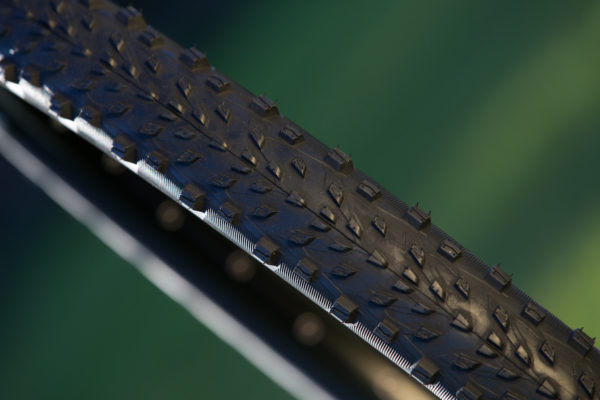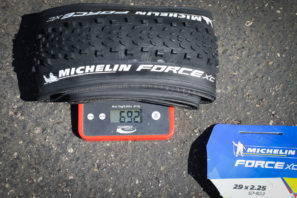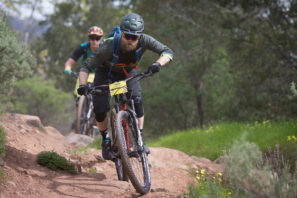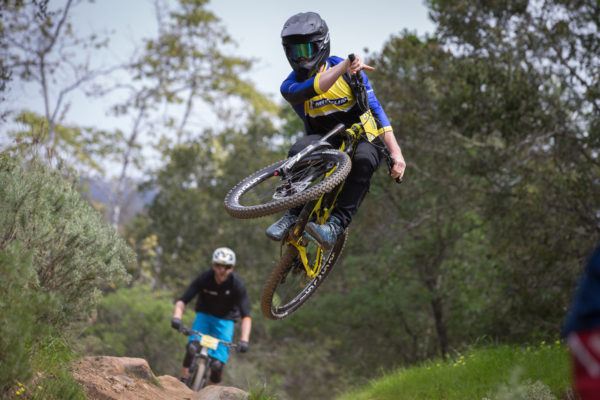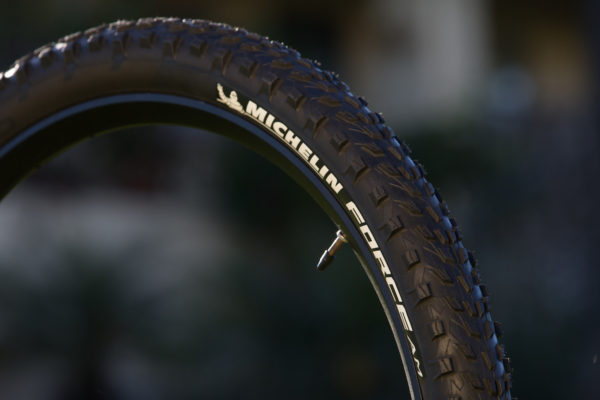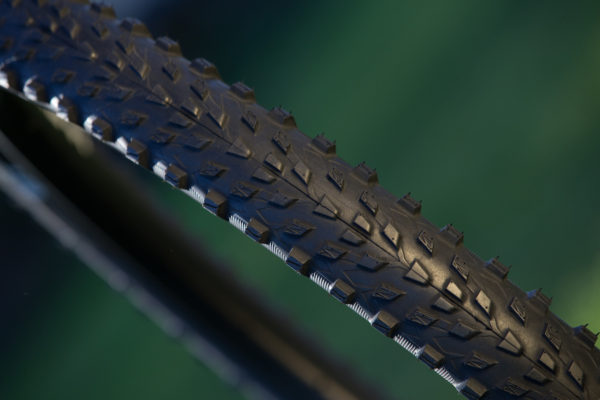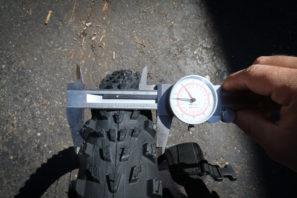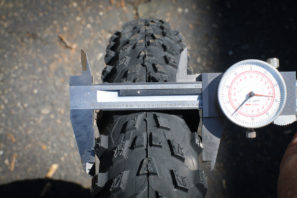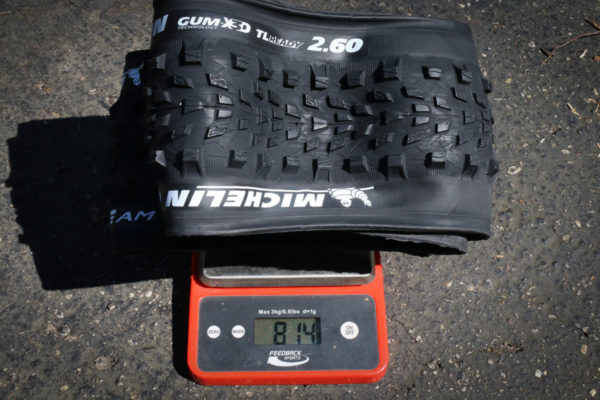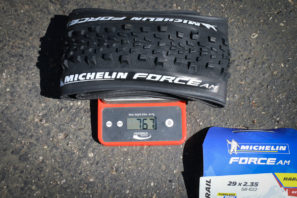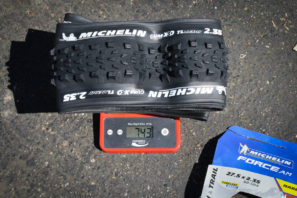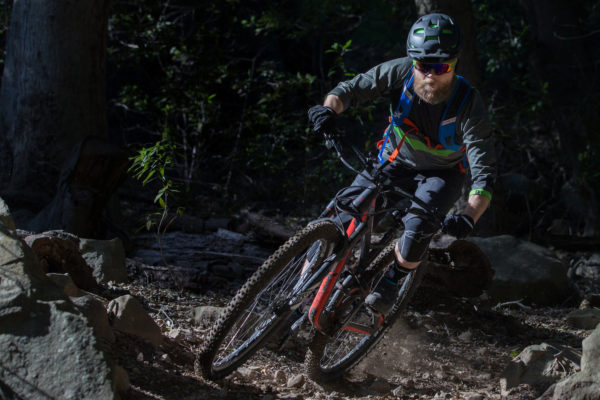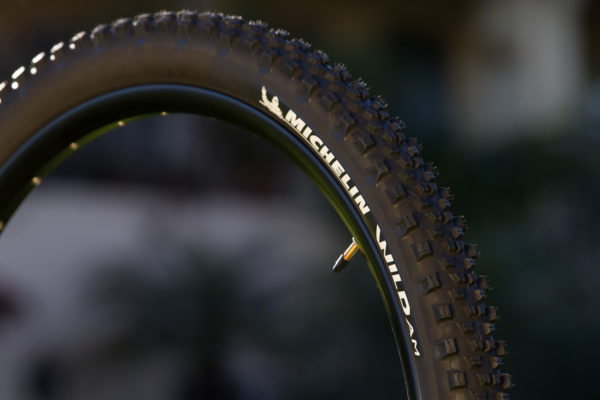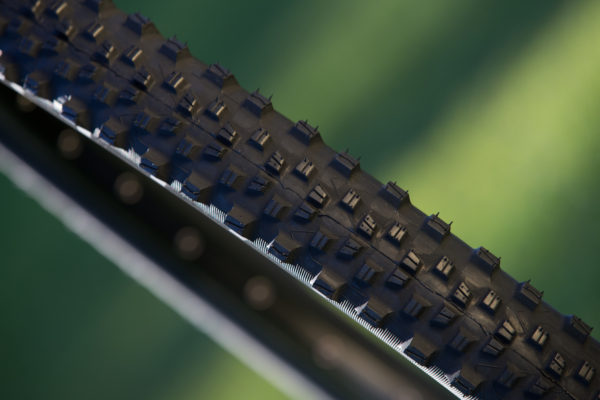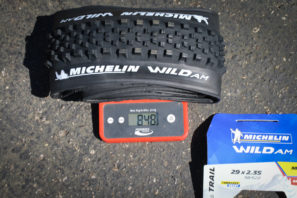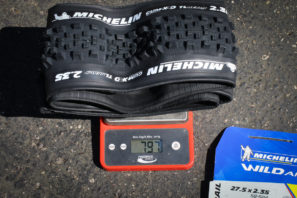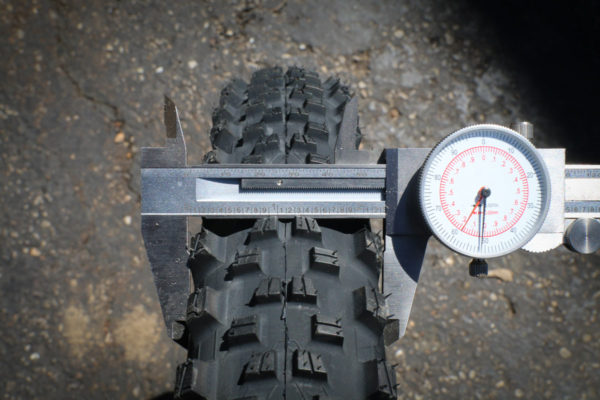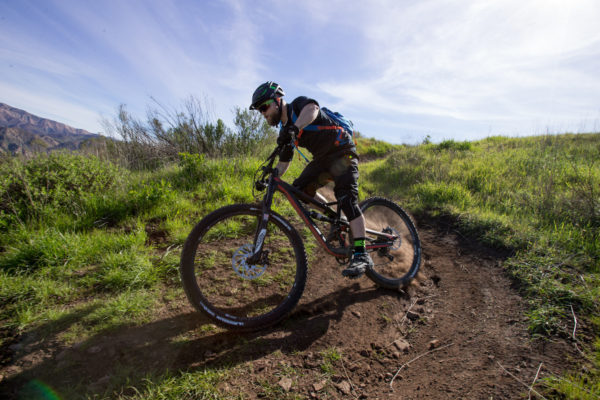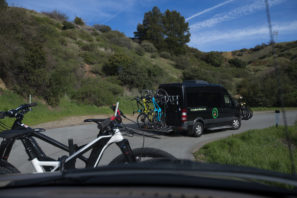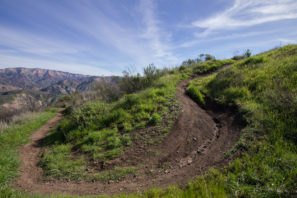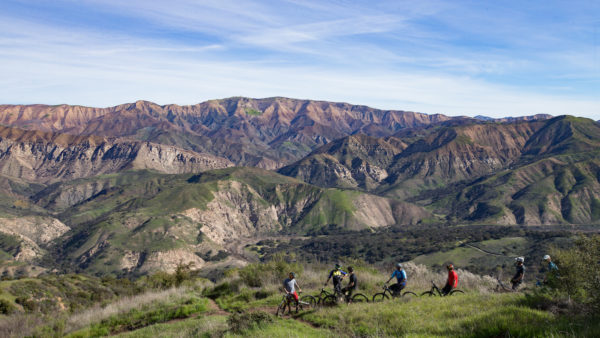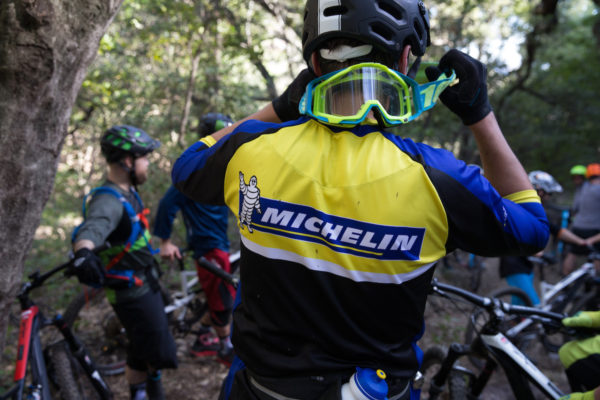When it comes to tires, few brands can compete with Michelin when it comes to size. With over 111,000 employees and a budget of nearly €700 million in R&D alone, it’s still hard to comprehend the staggering 184 million tires they produce annually. Yet, for the past few years, it has been surprisingly quiet on the mountain bike front from Michelin. After the launch of some new Wild treads in 2013, we haven’t heard much other than the fact that Michelin picked up Cam Zink as one of their partners for tire development.
If you’re going by the typical three year development cycle that Michelin cites for a new tire range, you’d expect them to have at least one new tire at this point. Instead, Michelin is launching four complete ranges that they say cover 80% of the mountain bike market. This is not something Michelin has taken lightly. Stating that off-road tire development is now a bigger focus for Michelin, Vice President of Marketing and Sales for their Two Wheel division Ross Shields called it a “Milestone Moment.” Stating that the two wheeled group is a small part of Michelin but an extremely passionate group, and that relaunching into the mountain bike market was one of those important moments for the company.
Taking a page out of the development of their Power road tire line, Michelin set out to completely relaunch their mountain bike ranges – and had to do it fast. Working with other teams within Michelin, and directly with their partners (what Michelin refers to sponsored riders as), the team got to work. Michelin’s chemists were researching new rubber compounds, engineers shared experience from the Moto, Car, and Truck side, prototype tires were run in the Olympics, more than 200 riders were given sets to test in real world conditions, and after two complete seasons of competition, three development cycles, and three years of design, testing, and verification, Michelin was ready. The result is four new tire ranges that cover the spectrum from XC to AM, and seem to be a big step forward for Michelin MTB…

In order to get a feel for the tires first hand, we headed out to meet Michelin in Santa Barbara, CA. In spite of Mother Nature’s best attempts to keep us off the trails with rock slides blocking key roads, we still managed to find enough trails to test out a solid chunk of the new line up. Michelin considers XC and AM riding to account for 80% most rides, so their new options fit accordingly. But more than just four individual tire ranges, Michelin has created a system where you can pick and choose the front and rear combination based on the type of riding you plan to do.
One of the biggest challenges for Michelin when it came to the relaunch was figuring out how to meet the needs of specific riders without needing a ton of different tires. Walk into the bike shop and you’ll be greeted with a dizzying array of sizes, treads, and options, so Michelin wanted to keep it to just four tread patterns and 16 different sizes (26, 27.5 and 29″ wheels). This launch was specifically for their Competition range which is the high end of Michelin tires. More affordable Performance tires will come next. Pricing is TBA, but should be announced by the time the Force tires start shipping in May – the Wild AM won’t come until June, while the Jet XCR is expected in October.
Jet XCR
Of all the new tires, the Jet XCR is the most race ready. In addition to the very racy tread pattern, the XCR uses their Gum-X2D rubber which is a combination of two compounds. The Race Compound is under tread for efficiency while the outer compound is optimized for efficiency and traction. The tire also makes use of their Race Shield ultra light casing with a 3×150 tpi very high density reinforcing ply. Offered only in 27.5 x 2.25 or 29 x 2.10/2.25, claimed weights range from 560-610g. Seeing as how this is mostly a race specific tire, we didn’t get the chance to ride the XCR while in Santa Barbara.
Force XC
If the Jet XCR is the race tire, then the Force XC is the trail tire that you can race on. Still a very light weight, fast tire, the Force XC makes the jump to Gum-X3D rubber which adds a softer rubber compound to the shoulders for increased cornering grip. It also moves to Cross Shield casing which uses a 3 x 110 tpi carcass with a very high density reinforcing ply. This tire is offered in a few more sizes including 26 x 2.10, 27.5 x 2.1/2.25, and 29 x 2.1/2.25, and claimed weights from 580-680. In this case, the 29 x 2.25 which has a claimed weight of 680 came in just a bit higher at 692.
This was the first tire we had a chance to roll in Santa Barbara, which ended up being multiple laps on the San Antonio Creek Trail. While this wasn’t the intended trail for the ride, we made the best of closed road and got some riding in that involved mostly downhill in one direction, and mostly pedaling in the other with a number of stream crossings in the middle. It’s been awhile since I’ve been on a true “XC” tire, and the skiny Force XCs were outgunned by the Enduro and AM rigs we were riding, but they showed promise. With the bike industry trending towards bigger and bigger tires I can’t see these going on anything but true XC and race rigs, but the grip and ride quality seemed to be there even if the tire volume wasn’t. What really stood out was the fact that we were riding an XC tire like it was meant for Enduro. Sure, it was being pushed past its limits (especially in the hands of Michelin’s partners like Gavin Godfrey and Cam Zink), but it was more confidence inspiring than any “XC” tire I’ve been on in a long time.
Force AM
Once we got into the Force AM, that’s when things started to get exciting. Stepping up to the Trail Shield, the Force AM tires use a 3 x 60 tpi casing with a high density reinforcement ply and the Gum-X3D rubber. Notably, this is also the start of the “E-Bike Ready” designation for Michelin’s mountain bike tires – they aren’t any different, just strong enough to withstand the torque from an electric motor. Sizing on the Force AM skews slightly larger with 26 x 2.25, 27.5 x 2.25/2.35, and 29 x 2.25/2.35.
There’s even a 27.5 x 2.6, though mounted up to a 30mm internal rim it only measured 2.5″. All of the new Michelin tires measured fairly true to size, but if anything were on the smaller side of the scale. Amusingly, I thought they were way undersized – until I realized I’m just so used to seeing plus tires, that these seem small. The 27 x 2.35 measured just over 2.3″ with the casing being the widest point, not the tread blocks.
All of the weights for the Force AM tires were under claimed, with the exception of the 27.5 x 2.35″ which came in 23g over claimed.
Thanks to the road closures, the day of shutting became a pedal-up-the-fire-road-first kind of day. While that made it difficult to get enough runs in before dark, it made for more realistic riding. If you’re riding the Force AM front and rear, you’re probably pedaling your way up to the top rather than shuttling. After a 40 some minute climb, it was time to test the tires’ durability on the rowdy Romero Canyon Trail which dropped us out at the start. One thing I immediately appreciated was how controllable the tires were once a drift was initiated – intentional or otherwise. For the most part we were riding in Hero Dirt conditions thanks to the amount of rain that has recently pummeled California, but that didn’t stop loose rock from playing with the front wheel. I was left impressed by the Force AM, but I wanted more grip in the front.
Wild AM
Which is why Michelin left the Wild AM until the end. The most aggressive tire in the new line up, the Wild AM is only available in two sizes – 27.5 x 2.35 and 29 x 2.35″. While it uses the same Trail Shield casing and Gum-X3D rubber, the tread is noticeably chunkier and was right at home on the front of the YT Jeffsy I was riding.
Again, the weights of the tires is a bit more than claimed with the 27.5 weighing 797g (760g claimed) and the 29er coming in at 848g (800g claimed). Frankly, these days I’m less concerned with tire weight than I am volume and grip, which the Wild AM delivers on – at least in grip. Measuring right around 2.3″, the Wild AM might have a hard time competing against the 2.4s and 2.5s out there, but apples to apples – the Michelins seem to be pretty true to size, and it does deliver impressive grip and control. It would only make sense that Michelin should offer this tire in a 2.6″ as well since it would be a great companion to the 2.6″ Force AM.
Day two found us shuttling Knapp’s Castle which was a mix of loose dusty fire road and singletrack it’s known for, and actual mud and severe rain ruts from the unyielding weather. The first run left me feeling a bit out of sorts for the first fast mountain biking of the year, but by the second run I was learning to trust the tires and getting faster all the time. With the Wild AM on the front I felt more confident sticking the front wheel into a corner and letting the rear hang out a bit. This was by far my favorite set up for the mixed conditions we were riding.
First Impressions:
After riding 3/4s of the new tires, it’s clear Michelin has done their homework. These are not the Michelin tires you’ve ridden years ago. That’s largely due to their partners like Cam Zink who provide constant feedback to new designs, but it’s also thanks to Michelin employees like Vincent Ledieu, one of the main engineers on the MTB project who can ride as well as he can design. Notably, the tires are fairly easy to install on the rim, yet they seated (and sealed) on the rim without any sealant. It will be interesting to see what long term durability is like, but our first impressions were quite good. It seems like Michelin could use a few larger sizes to satisfy the U.S. market, but that will probably come with time. For now, when it comes to tires for XC, Trail, and AM, Michelin has proven themselves to be a force, once again.

